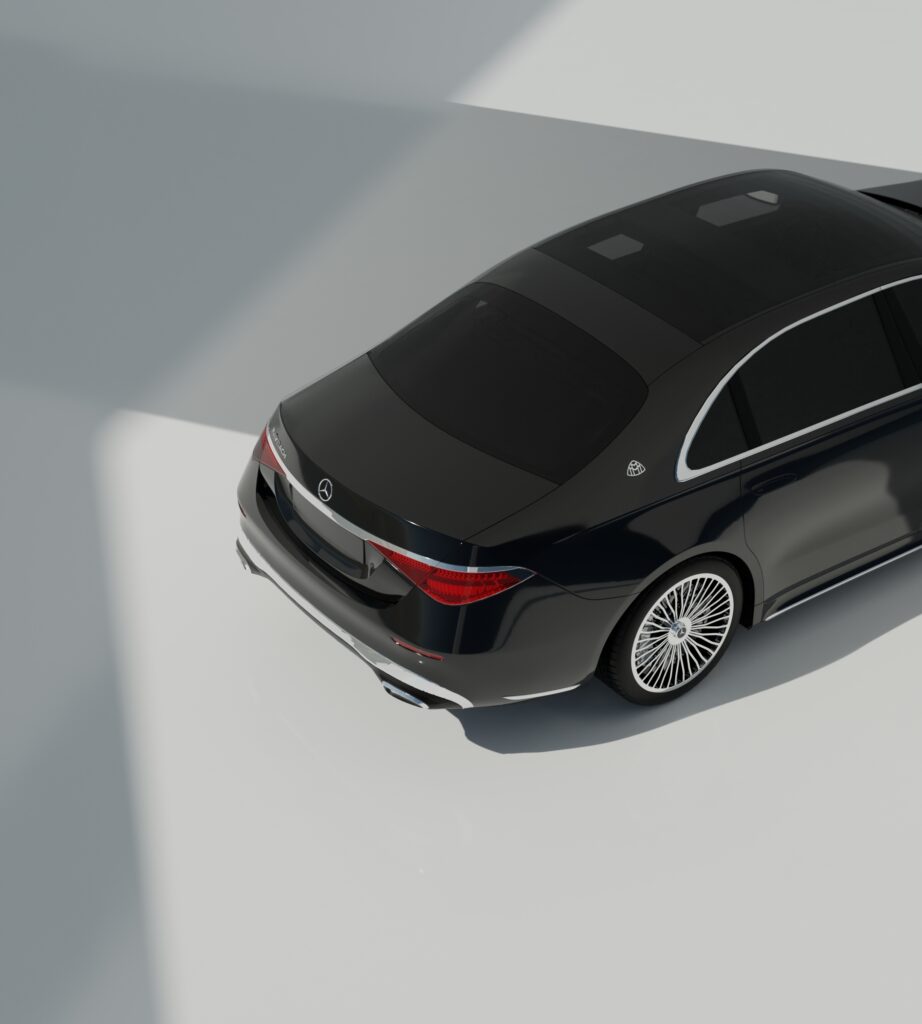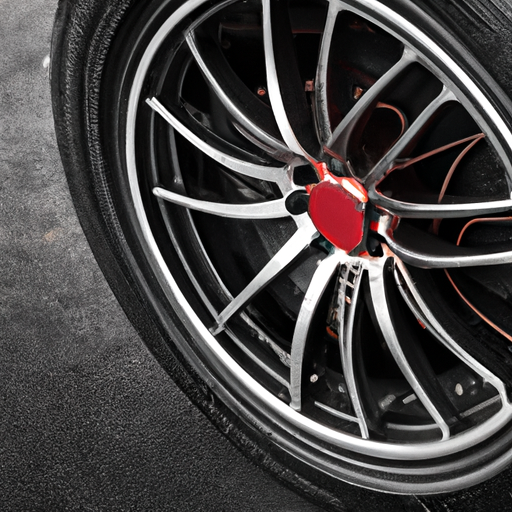Have you ever wondered how the choice of wheels can impact your car’s handling? A car’s wheels play a crucial role in determining its overall performance on the road. From different sizes and materials to tread patterns and rim designs, each aspect of the wheel contributes to the way your car handles. In this article, we will explore the various ways in which your wheel choice can affect your car’s handling characteristics, allowing you to make an informed decision when it comes to selecting the perfect set of wheels for your vehicle.
1. Understanding Wheel Choice
1.1 What is Wheel Choice?
When it comes to your car’s handling characteristics, one crucial factor to consider is your wheel choice. The wheels you choose for your vehicle have a significant impact on how it performs on the road. Wheel choice refers to the selection of the size, width, material, and other factors that make up the wheels on your car.
1.2 Importance of Wheel Choice in Handling Characteristics
The wheel choice plays a vital role in determining how your car handles on different road surfaces and conditions. It affects various aspects of your vehicle’s performance, including steering response, grip, traction, ride comfort, braking performance, and acceleration.
2. Factors to Consider in Wheel Choice
2.1 Wheel Size
The size of your wheels can greatly influence the overall performance of your car. Larger wheels offer a more aggressive and sporty appearance, but they can also affect ride quality and handling. Smaller wheels, on the other hand, provide a smoother ride but may compromise on visual appeal.
2.2 Wheel Width
The width of your wheels also plays a significant role in handling characteristics. Wider wheels generally provide better grip and traction, especially during cornering. However, they may also increase rolling resistance and affect fuel efficiency.
2.3 Wheel Material
The choice of wheel material can have an impact on both performance and aesthetics. Alloy wheels are popular due to their lightweight and attractive designs, but they may not be as strong as steel wheels. Steel wheels, on the other hand, are known for their durability but may not offer the same level of visual appeal.
2.4 Weight of Wheels
The weight of your wheels is another crucial factor to consider. Lighter wheels can improve acceleration, braking, and handling performance by reducing unsprung weight. On the other hand, heavier wheels can negatively impact these factors and may also increase fuel consumption.
2.5 Offset and Backspacing
The offset and backspacing of your wheels determine how they sit in relation to the vehicle’s suspension components. It affects the track width, clearance, and stability of your car. Choosing the right offset and backspacing ensures proper fitment and optimal handling.
2.6 Tire Options
While not directly related to the wheel itself, the choice of tires is closely linked to wheel selection. The type, size, and compound of the tires greatly influence the overall handling characteristics. It’s important to consider the compatibility and performance of tires with your chosen wheels.

3. Impact of Wheel Choice on Handling
3.1 Steering Response and Precision
The wheel choice has a significant impact on your car’s steering response and precision. Lighter wheels with lower rotational inertia can provide sharper and more responsive steering, improving the overall driving experience. Conversely, heavier wheels can result in slower steering response and reduced precision.
3.2 Grip and Traction
Grip and traction are essential for maintaining control of your vehicle, especially during cornering and in adverse weather conditions. The choice of wheel width and tire size plays a crucial role in providing adequate grip and traction. Wider wheels with appropriately sized tires offer increased contact patch, resulting in better grip and traction.
3.3 Ride Comfort
Your wheel choice can also affect the ride comfort of your car. Larger wheels with shorter sidewall tires may result in a harsher ride as they transfer more road imperfections to the suspension. Conversely, smaller wheels with taller sidewall tires absorb road irregularities better, providing a smoother and more comfortable ride.
3.4 Braking Performance
The braking performance of your car can be influenced by wheel choice. Lighter wheels can reduce unsprung weight, allowing for quicker brake response and improved stopping distances. Additionally, wider wheels with appropriate tire selection can enhance overall braking performance by providing better grip and traction.
3.5 Acceleration and Performance
Wheel choice also has an impact on your car’s acceleration and overall performance. Lighter wheels reduce rotational inertia, allowing the engine to deliver power more efficiently. They can contribute to quicker acceleration and improved performance. Conversely, heavier wheels can increase rotational inertia, resulting in slower acceleration and reduced performance.
4. Wheel Choice: Different Types and Considerations
4.1 Alloy Wheels
Alloy wheels are a popular choice among car enthusiasts due to their lightweight and visually appealing designs. They are typically made from a combination of aluminum and other elements. Alloy wheels offer benefits such as improved fuel efficiency, better heat dissipation, and increased brake clearance.
4.1.1 Strength and Weight Considerations
When selecting alloy wheels, it’s important to consider their strength and weight. While alloy wheels are generally lighter than steel wheels, the specific design and manufacturing processes affect their strength. Opting for high-quality alloy wheels ensures durability without compromising on weight savings.
4.1.2 Aesthetic and Styling Factors
Another advantage of alloy wheels is their aesthetic appeal. They are available in various finishes and designs, allowing you to customize the look of your vehicle. Alloy wheels can enhance the overall appearance, giving your car a sportier and more premium look.
4.2 Steel Wheels
Steel wheels are known for their strength and durability. They are often the standard choice for more rugged and utilitarian vehicles. Steel wheels generally withstand harsh conditions and rough surfaces better than alloy wheels, making them suitable for off-road or heavy-duty applications.
4.3 Forged Wheels
Forged wheels are highly regarded for their strength, lightweight construction, and superior performance. They are produced through a specialized manufacturing process where the wheel material is compressed under extreme pressure. Forged wheels offer exceptional durability, stiffness, and can be customized to meet specific performance requirements.
4.4 Aftermarket Wheels
Aftermarket wheels refer to wheels that are not supplied by the original vehicle manufacturer. These wheels are available in a wide range of sizes, styles, and materials, allowing for greater customization and personalization. Aftermarket wheels often offer improved performance characteristics compared to stock wheels.
4.5 OEM vs. Aftermarket Wheels
When considering wheel choice, you have the option of OEM (original equipment manufacturer) or aftermarket wheels. OEM wheels are those that come with your vehicle from the factory. They are designed and tested by the manufacturer to meet the specific requirements of your car. Aftermarket wheels, on the other hand, offer more variety and customization options but may require additional research to ensure proper fitment and performance.

5. Choosing the Right Wheel Size
5.1 Stock Wheel vs. Plus Sizing
When it comes to wheel size, you have the option of sticking with the stock wheel size or opting for plus sizing. Plus sizing refers to increasing the diameter of the wheels while maintaining the same overall tire diameter. It offers various benefits, including enhanced cornering stability, improved appearance, and increased brake clearance.
5.2 Ideal Wheel Size for Different Vehicles
The ideal wheel size depends on the type of vehicle you have and your specific needs and preferences. Smaller vehicles generally benefit from smaller wheel sizes, as they provide better ride comfort and fuel efficiency. Larger vehicles, such as SUVs or trucks, often benefit from larger wheels, as long as the suspension can accommodate them without compromising ride quality.
5.3 Impact of Wheel Size on Handling
Wheel size has a significant impact on handling characteristics. Larger wheels can provide better stability during high-speed maneuvering and reduce body roll in corners. However, increasing the wheel size may also result in a stiffer ride and increased vulnerability to road imperfections. It’s crucial to strike a balance between aesthetics and practicality when choosing the right wheel size.
6. Importance of Wheel Width and Offset
6.1 Balancing Width and Handling
Wheel width is a critical consideration when it comes to handling characteristics. Wider wheels offer increased grip and traction, especially during aggressive cornering. However, excessively wide wheels can lead to reduced steering response and increased rolling resistance. Choosing the correct wheel width ensures optimal handling without compromising other performance aspects.
6.2 The Effect of Offset on Steering and Suspension Geometry
Offset refers to the distance between the wheel’s mounting surface and its centerline. It determines how the wheel and tire fit within the wheel well. The offset plays a crucial role in the suspension geometry, affecting aspects such as scrub radius, track width, and clearance. Proper offset selection ensures the wheels align correctly with the suspension components, allowing for optimal handling and tire wear.

7. The Role of Tire Options with Wheel Choice
7.1 Tire Size and Aspect Ratio
The choice of tire size and aspect ratio is closely linked to wheel selection. The tire size should be compatible with the chosen wheel size to ensure optimal fitment and performance. Additionally, the aspect ratio affects the tire’s sidewall height, which has an impact on ride comfort, handling, and overall aesthetics.
7.2 Tire Compound and Performance
Tire compound refers to the specific rubber formulation used in tire construction. Different tire compounds offer varying levels of grip, traction, and durability. Soft compound tires prioritize grip and performance but may wear out quicker. Hard compound tires focus on longevity but may sacrifice some grip. Matching the right tire compound with your wheel choice enhances overall handling and performance.
7.3 Considerations for Winter and All-Season Tires
In regions with cold winters or unpredictable weather conditions, the choice of tires becomes even more critical. Winter tires provide exceptional grip and traction on snow and ice, ensuring safe driving in adverse conditions. All-season tires offer a balance between performance in different weather conditions. It’s important to consider the compatibility of winter or all-season tires with your chosen wheels.
8. Performance vs. Comfort: Finding the Right Balance
8.1 High-Performance Wheels and Handling
If you prioritize performance and sporty driving characteristics, high-performance wheels may be a suitable choice. These wheels are often lightweight, with advanced designs that enhance grip, cornering stability, and acceleration. It’s important to consider the trade-offs, such as reduced ride comfort and potential compatibility issues with daily driving.
8.2 Comfort-Oriented Wheels and Trade-Offs
For those seeking a comfortable and smooth ride, comfort-oriented wheels are a better option. These wheels typically prioritize ride quality and absorb road imperfections effectively. However, they may not offer the same level of performance or visual appeal as high-performance wheels. It’s crucial to strike a balance between comfort and handling characteristics that meet your specific requirements.

9. Potential Pitfalls and Considerations
9.1 Wheel Interference and Fitment
When choosing new wheels, it’s essential to consider potential wheel interference and fitment issues. The wheels should be compatible with your vehicle’s suspension components, brake calipers, and bodywork. Incorrect fitment can lead to rubbing, decreased clearance, and compromised handling. Consulting with a knowledgeable professional or utilizing fitment guides can help avoid these issues.
9.2 Proper Wheel Alignment and Suspension Setup
After installing new wheels or altering the wheel size, it’s crucial to ensure proper wheel alignment and suspension setup. Incorrect alignment can result in uneven tire wear, reduced handling performance, and compromised safety. Seeking professional assistance for wheel alignment and suspension setup ensures your car operates optimally and maintains handling integrity.
9.3 Maintenance and Durability
Maintaining your wheels is vital for long-term performance and durability. Regular cleaning and appropriate care help prevent corrosion and damage to the wheel finish. Additionally, avoiding curbs, potholes, or other road hazards can help prolong the life of your wheels. Investing in high-quality wheels and following proper maintenance procedures ensures they serve you well for an extended period.
9.4 Cost and Budget Factors
Lastly, it’s important to consider cost and budget factors when making your wheel choice. Different types of wheels come with varying price tags, and additional costs may be involved, such as tire selection and installation. Setting a budget and considering the long-term value and benefits of your chosen wheels can help make an informed decision.
In conclusion, wheel choice greatly affects your car’s handling characteristics. Considering factors such as wheel size, width, material, and tire options is essential for optimal performance and safety. The right wheel choice strikes a balance between aesthetics, handling, and practicality, enhancing your driving experience and ensuring maximum enjoyment of your vehicle.

